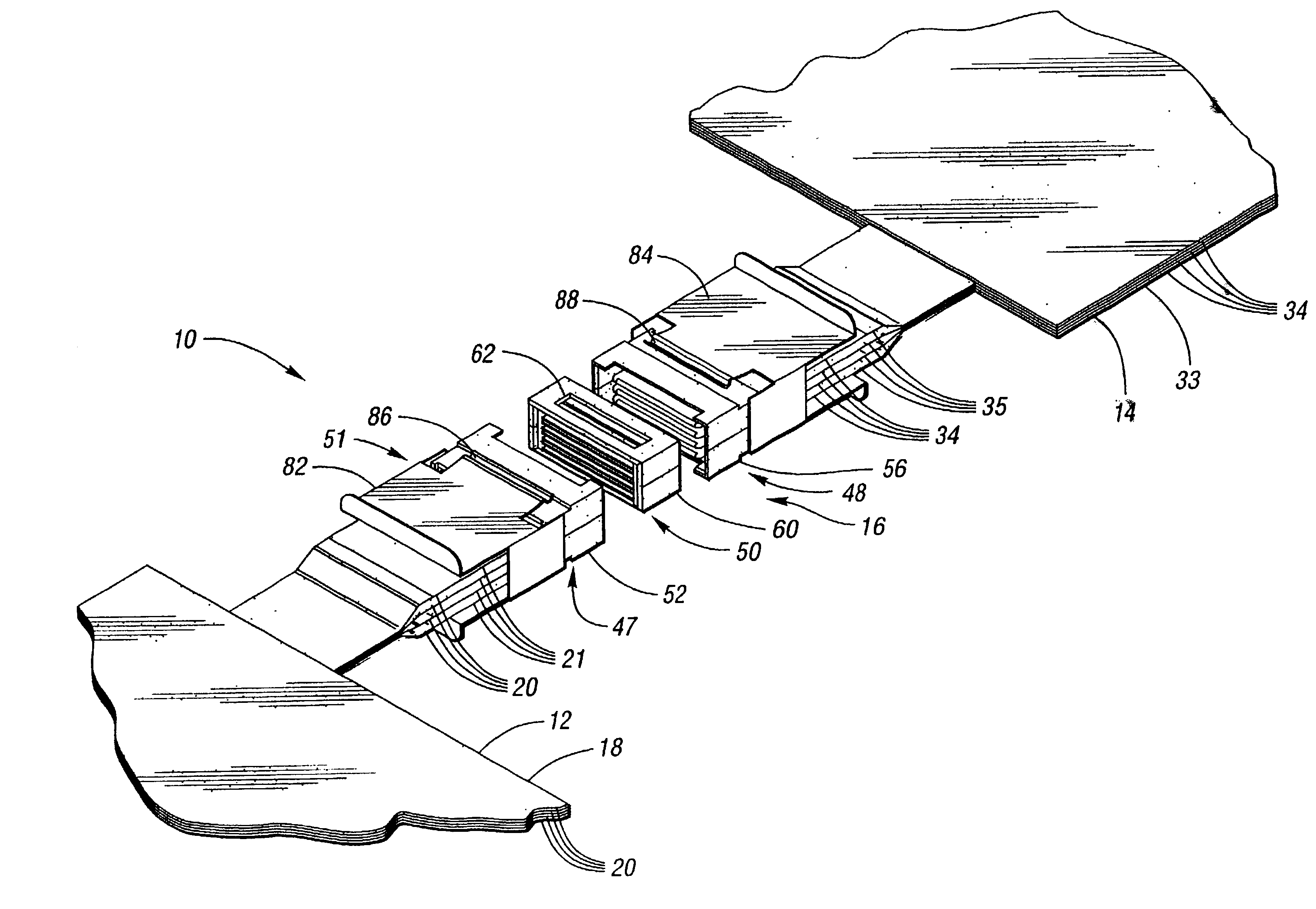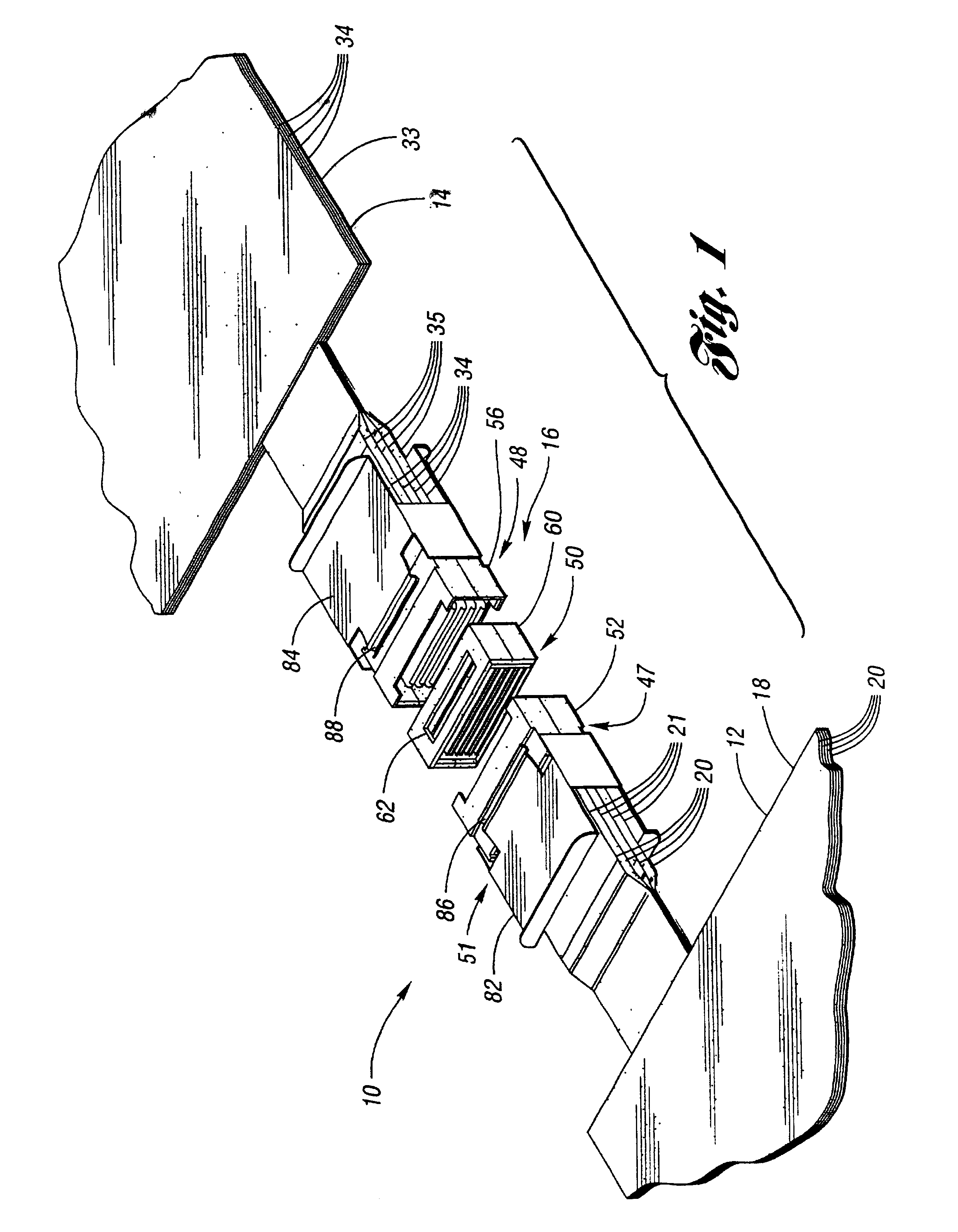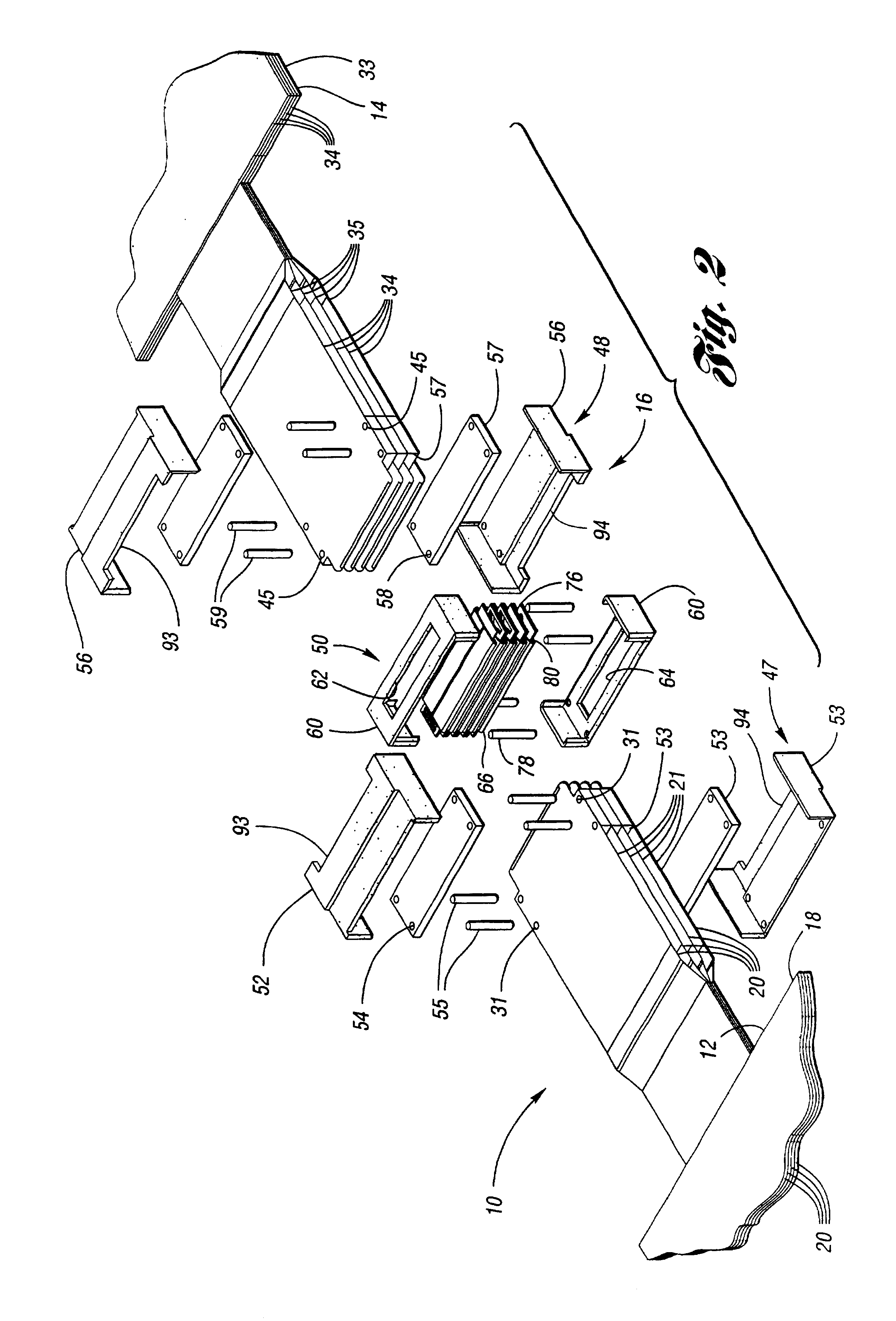Method of forming alignment features for conductive devices
a technology of alignment features and conductive devices, which is applied in the direction of etching metal masks, coupling device connections, and printed element electric connection formation, etc., can solve the problems of increasing the trace density and difficulty in obtaining precise registration of mechanical alignment features with the contact portions of traces
- Summary
- Abstract
- Description
- Claims
- Application Information
AI Technical Summary
Benefits of technology
Problems solved by technology
Method used
Image
Examples
Embodiment Construction
FIGS. 1-4 show a conductive system or network 10 for use in computer and / or electronic equipment, such as data processing equipment and networking equipment. The network 10 includes first and second conductive devices, such as first and second multi-layer printed circuit boards (PCB's) 12 and 14, respectively, and a connector assembly 16 for connecting together the PCB's 12 and 14. The first PCB 12 has a first main body 18 that includes multiple first signal layers 20. A portion 21 of each first signal layer 20 preferably extends beyond the first main body 18 so as to provide access to each first signal layer 20. Furthermore, the portions 21 are preferably flexible and not bonded to each other proximate distal ends of the portions 21, so that the portions 21 are independently moveable.
Referring to FIGS. 5 and 6, each first signal layer 20 has a first substrate 22, a plurality of first conductive paths or traces 24 disposed on one side of the first substrate 22, and a first ground pl...
PUM
| Property | Measurement | Unit |
|---|---|---|
| width | aaaaa | aaaaa |
| radius | aaaaa | aaaaa |
| conductive | aaaaa | aaaaa |
Abstract
Description
Claims
Application Information
 Login to View More
Login to View More - R&D
- Intellectual Property
- Life Sciences
- Materials
- Tech Scout
- Unparalleled Data Quality
- Higher Quality Content
- 60% Fewer Hallucinations
Browse by: Latest US Patents, China's latest patents, Technical Efficacy Thesaurus, Application Domain, Technology Topic, Popular Technical Reports.
© 2025 PatSnap. All rights reserved.Legal|Privacy policy|Modern Slavery Act Transparency Statement|Sitemap|About US| Contact US: help@patsnap.com



